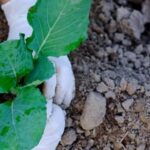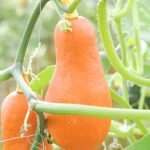Adding Tips from Experienced Gardeners
When mulching vegetable gardens with leaves, experienced gardeners world provide invaluable advice. It is important to understand the types of leaves available, their benefits and how to best use them in the garden. Fallen leaves can be collected from trees nearby and chopped into small pieces for easier spreading. If a leaf chopper is available, it can make this task even more efficient.
Once chopped and ready to spread, it’s important to be familiar with the location of vegetable plants before beginning; the mulch should not be applied directly onto plant stems as this could cause damage or block moisture from reaching the roots. Additionally, leave enough room around each vegetable plant so that air can freely circulate. Compost tea can then be added atop the layers of chopped leaves helps to add valuable nutrients. To ensure proper absorption in the soil, experienced gardeners recommend lightly tamping or raking down after applying each layer of foliage. Additionally, adverse weeding should occur regularly to prevent any competing vegetation from impeding on beloved vegetable progress!
Discuss Alternative Mulching Materials
Alternative materials that may be used in mulching vegetable gardens include things such as grass clippings, straw, shredded bark mulch, and newspaper. In addition to serving the same protective and water-trapping purpose as leaves, each of these options have unique advantages. Grass clippings add a rich nitrogen content to the soil, while straw gives your veggies an extra boost of warmth. Shredded bark mulch can help plants tolerate dry conditions better, and newspaper helps block sunlight from reaching weed growth. Additionally, all of these alternatives are relatively inexpensive sources for mulch materials.
Include a Troubleshooting Section
Troubleshooting:
Leaf Mold: If leaves are left on the vegetable patch without any form of material to help keep them aerated, they may begin to decompose at an accelerated rate and form leaf mold. Leaf mold can be a breeding ground for fungi and plant diseases, so it is important to address quickly. To control the spread of leaf mold, rake the leaves regularly and mix in a compost or soil amendment.
Compaction: Compaction occurs when too much weight is pressing down on the soil. This can be caused by mulching heavily with leaves or by walking or driving vehicles over it. The best way to prevent compaction is to lay down a layer of cardboard or straw before applying your leaves. This will help to cushion the impact and reduce compaction over time. Additionally, avoid compacting the same areas more than once with heavy machinery or people walking on them repeatedly.
Breakdown of Cost/Time Savings
Mulching vegetable gardens with leaves is one of the most cost and time-efficient ways to protect your plants from weeds, pests, and the weather. Compared to other mulching methods like plastic or wood chips, it is considerably cheaper as you can simply gather it from around your home or purchase in bags from a hardware store. The application process is also much simpler as you just need to spread the leaves over your bed in a layer of [1–2 inches] thick for them to be effective. Additionally, unlike other mulching methods, leaves eventually break down and fertilize the soil so you don’t have to replace them often. So not only is it cheap but requires hardly any maintenance. Finally, using natural materials like leaves cuts down on the use of potentially harmful synthetic products that could stress out your plants instead of helping them. All in all, mulching vegetable gardens with leaves results in considerable cost and time savings that are well worth considering before investing in alternate mulching approaches.
Benefits of various Types of Leaves
Oak Leaves: Oak leaves make for a great mulch, as they decompose quickly and create a nutrient rich soil that is beneficial to the vegetable garden. Advantages include deep leaf color that adds an aesthetic appeal as well as its ability to absorb water quickly and keep the soil moist. Drawbacks of using oak leaves are that they take longer to break down than other types of leaves, and it may be difficult to push them into your garden beds due to their size and shape.
Maple Leaves: Maple leaves are excellent at retaining moisture in your soil while providing good ventilation some plants may need due to low-oxygen levels. The fallen maple leaf mulch creates a beautiful contrast when spread around vegetable plants and should be laid on top of the garden no more than four inches thick. A disadvantage is that maple leaves contain chemicals (tannins) which can cause certain vegetables, like lettuce or kale, to become bitter if not washed properly before consumption.
Pine Needles: Pine needles are a useful source of slow-release nitrogen for vegetable gardens as they decompose slowly over time, allowing for gradual uptake in nutrients by nearby plants. They also create fragrant fragrance and help control weed growth relatively. Drawbacks may include acidifying the soil over extended periods of time – this could prove detrimental for certain cultivated crops such as beans or tomatoes which generally require less acidic soils for propagation success.
Recommendations for Different Types of Plants
Leaves can make great mulch for vegetable gardens, but the type of leaf you should use depends on the type of vegetable plants you’re growing. If you are growing root vegetables such as carrots, onions, or radishes, hardy leaves like oak and beech are good choices. These types of leaves decompose slowly over time and form a protective layer between the soil and the vegetables. For more delicate vegetables like tomatoes or cucumbers, choose softer leaves like maple or birch. These decompose faster than the hardier varieties so they provide a less solid foundation which is better for these sensitive plants. For leafy greens like spinach or lettuce, try to use needles from evergreen trees like pine or fir as your mulching material. The needles act as little sponges that can absorb moisture in order to keep these plants cool during hot summer days.

If you’re looking to get into vegetable gardening, or are just looking for some tips on how to make your current garden better, then you’ve come to the right place! My name is Ethel and I have been gardening for years. In this blog, I’m going to share with you some of my best tips on how to create a successful vegetable garden.





